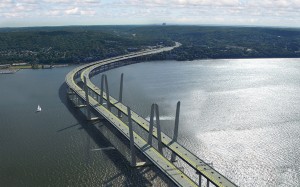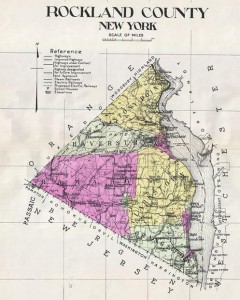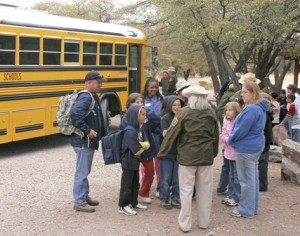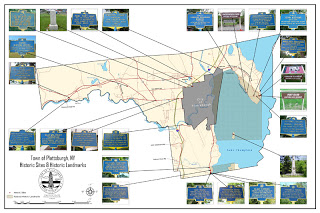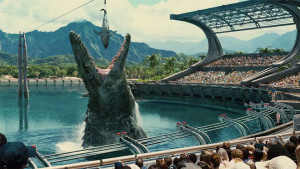
Jurassic World, the latest tourism movie, has broken box office records. It showcases the plight of executive directors of destination tourist sites in continually developing newer and more exciting exhibits to attract an increasingly bored public with limited attention span and which wants to be stimulated. The exhibits at Jurassic World are even more dangerous than Yul Bryner in Westworld and create an even more thrilling experience than our best American Revolution or Civil War reenactments.
Jurassic World’s operations manager is Claire Dearing. She is apparently is best-known for wearing high heels and managing to keep them on no matter the circumstances…including when running for her life! She has been referred to as a “business suit-clad executive” who refers to the dinosaurs as “assets.” She also is said to “describe the parks in terms of revenue, not awe.” She “spends most of her time… hosting potential sponsors.” Any resemblance to actual managers of destination tourism sites is entirely coincidental.
Lessons of Jurassic World
What are the lessons of Jurassic World for the New York history community? Contrary to the Flintstones and Raquel Welch, dinosaurs are not part of human history. Mastodons (not mammoths) however, are. As previously discussed in New York History, they were present in the Hudson Valley and discoveries of mastodon bones were events of great significance in colonial times and early American history. Mastodons posed important theological questions and helped dispel the accusation of America being an inferior land because it did not have the large beasts of the Old World.
While their remains have been discovered throughout the state including on Broadway, many of these discoveries occurred in Orange County. Museum Village along Route 17 displays mastodon bones and skeletons. The County Historian, a rare full-time position, has a degree in anthropology with a focus on the Orange County mastodon discoveries of the early 19th century. While the efforts to resurrect mammoths (mastodons) is still in the infancy stage, we should not overlook the appeal of mastodons, and their history, in tourism and education.
Another important lesson we can draw from Jurassic World is the importance of the blockbuster. This type of movie is distinctly different from the run-of-the-mill release. We are all familiar with museums launching blockbuster exhibits. The famous King Tut exhibit is perhaps the most well-known. A few years ago the New-York Historical Society had a blockbuster exhibit on Alexander Hamilton,an individual currently boffo Off-Broadway, soon to be on Broadway (I am attending the opening July 13 as will many members of the Alexander Hamilton Awareness Society), and now in the news for the wrong reasons.
In the Hudson Valley one of the biggest blockbusters has become Halloween. This is not the holiday of my childhood, but holidays are assets which can be leveraged into annual revenue streams. Consider this headline from last October:
Cashing in on Halloween: Holiday brings in tourists, money.
Historic Hudson Valley has made a decision to minimize its focus on traditional family weekend tourism and instead go all-out for blockbuster experiences. This means performances of the “Legend of Sleepy Hollow” at Halloween and “A Christmas Carol” at Christmas by Hudson Valley storyteller Jonathan Kruk and other events like Pirates of the Hudson (due to Johnny Depp) and Pinkster which has an historical basis.
The numbers speak for themselves. The visitors for these programs are over 100,000. The estimated average expenditure is $92 per person on dining, shopping, and lodging in addition to the ticket prices for the events. Rob Schweitzer, director of marketing for Historic Hudson Valley, estimates that one-third of the visitors stay overnight and make a long weekend of the visit. In other words, these events generate revenue – including tax revenue just as the Past through History is supposed to do.
Another lesson from Jurassic World is that size matters. Right now New York is undertaking the largest construction project in America: the new Tappan Zee Bridge. This massive project involves monstrous-size equipment and a daily chronicle of events. It even has a name: the Left Coast Lifter. It also has a nickname: I Lift N.Y. Recently the Historical Society of Rockland County held a second boat tour on the River Rose, a Mississippi paddle wheeler, which included 125 people, many of who were shut out of the last tour. A local front-page newspaper headline read “TZB Tourists See History in the Making.”
Think about the wasted opportunity here by Rockland, by Westchester County which could have cruises from the Tarrytown side of the bridge, and by I Love NY to see I Lift N.Y. Imagine morning and afternoon tours and a sunset cruise during the summer. That is a potential for over 10,000 people month on the River Rose who besides paying the cost of the cruise may do other things while in Westchester, Rockland, or both. How difficult would it be to create a weekend program that included a cruise to see the biggest erector set in America, visit nearby historic sites, and have a meal on a scenic river boat or in the historic Old ‘76 House? Food, lodging, shopping, revenue, tax revenue. Let’s take advantage of the tourist opportunities which are staring us in the face.
One final lesson from Jurassic World is storytelling. Steven Spielberg has made a fortune by being a great storyteller and historic sites also have great stories to tell. They may be primarily for local consumption, like the stories families tell on Thanksgiving or other family occasions. These are the stories of community heritage which should be celebrated as part of the social fabric by the members of a local community. There are also are stories of state, national, and global significance which can be told as well.
The history community needs to become better storytellers, to use its site as a stage, to invite the audience to become part of the experience. Jurassic World is an artificial reality of special effects; we have the real world with real objects that can be touched and places that can be visited. Let’s perform our stories. Let’s tell our histories. Let’s bring the past to life our way.


